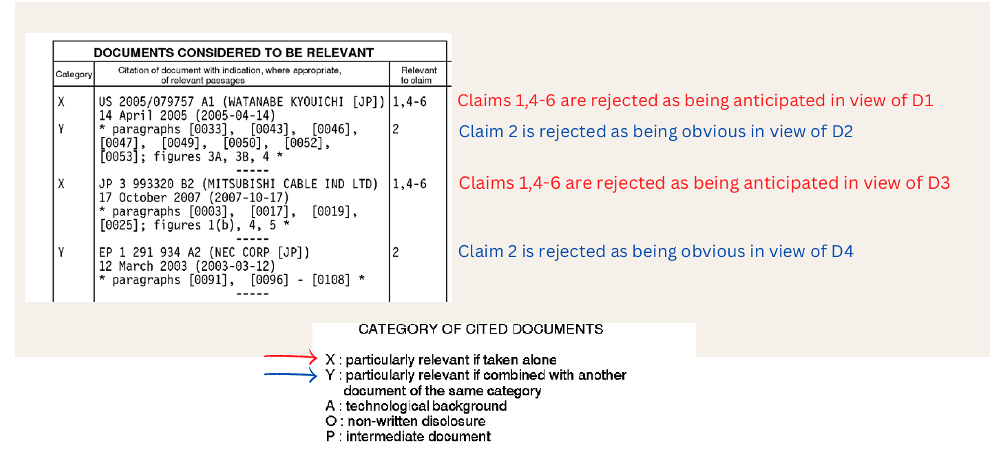How U.S. Attorneys Should Tackle Extended European Search Reports
Why should U.S. attorneys bother with learning European Patent (EP) practice? Because every once in a while, your client is going to ask you about IP portfolio management in other countries, whether you have a client that is already a multinational entity or thinking about expanding across borders. It’s not uncommon for a client to ask you about practicing before the European Patent Office (EPO) versus, for example, one of the Asian or Latin American patent offices, in which case they will more likely talk directly to a foreign associate. The reason for this is because of English. You speak it. They also speak it. So, your client could very well ask you to review documents coming out of Europe to save money (if they have not already). Because of this, it’s important to know some of the basics of European prosecution practice. In this episode of IP Practice Vlogs, let’s talk about Extended European search reports (EESRs), which basically means an EP office action.
Reading an EESR
When you receive an EESR, you should turn towards the end and see which claims are rejected in view of the prior art and check to see if you might have any allowable subject matter. All EESRs will include a chart after the substantive comments and that lists all the cited references corresponding to the claims that the references are being applied to. A reference marked “X” means it’s relevant when taken alone, which means it’s being used as an anticipatory reference. A reference marked “Y” means that reference that’s relevant if combined with another document.
In the sample below, we have claims 1 and 4-6 as being anticipated in view of the first reference. Claims 1 and 4-6 are also rejected as being anticipated by the third reference. Claim 2 is rejected as being obvious in view of the second reference, and quite possibly as being obvious over the combination of the second in view of the first reference. Claim 2 is also alternatively rejected as being obvious in view of the fourth reference, which is probably over the combination of the fourth in view of the third reference. Looking at this chart gives you a good overview of where your claims stand and which references you should pay attention to.
Two-Part Form
European examiners often ask applicants to amend the independent claims into this so-called two-part form. This is a formality matter that is basically untraversable.
The first part of the two-part form is the preamble, and it must be a statement indicating “the designation of the subject-matter of the invention”, i.e. the general technical class of apparatus, process, etc. to which the invention relates”.
The second part of the two-part form claim is a “characterizing portion” which is a statement of “the features which the invention adds to the prior art.”
It is in the applicant’s interest to not include environmental structure in part two because this section is supposed to have only what’s necessary for novelty. If you accidentally include too much environmental structure to give breadth to the point of novelty, then you’ve set a very low ceiling for yourself because you cannot go broader than your original presentation of the claims. At the same time, it also looks like you’re not supposed to be claiming environmental structure in the first part either.
So, what happens when you have environmental structure? You often need to claim environmental structure whether you’re talking about mechanical or software claims because you do that to give breadth and light to the claims. Say you have a mechanical claim in which you’re claiming a new transmission but the point of novelty is about how it’s fixed in the engine compartment. You have to claim some conventional parts of the transmission and some conventional parts of the vehicle to capture how the parts interact with each other in order to capture the point of novelty.
If you’re entering Europe on the basis of a U.S. application, or vice versa, you should probably advise your client to rewrite the claims upon entry into the different countries to place them in better condition for foreign examination. That is, if your client is going into Europe using a U.S. application, you can amend the claims to segregate the environmental features from the characterizing part so that you do not unduly limit the scope of novelty.
Two-Part Form a Good Idea in the United States?
Wouldn’t it be interesting if this two-part form practice was implemented in the United States? Because let’s imagine applicant gets to say what the claims are directed to. Right now, everyone gets to interpret what the invention is directed to and no one is listening to the applicant. I’m talking about step 2A of the Alice test, which is the “directed to” prong. If you get a really crappy “directed to” determination in step 2A, congratulations, you’ve been directed to an abstract idea.
The two-part form claiming practice may work pretty well with our current U.S. system given the Alice framework we have to live with until Congress does something, because applicant gets to define what the invention is directed to. In return, applicant makes an admission of what’s necessary for novelty, which is frankly what should be happening anyway. I also think this type of claiming practice works better than our integration test (is the software integrated with an actual machine or article of manufacture?), which isn’t a test, as the USPTO does not have substantive rulemaking authority and must resort to writing guidelines by means of theory based on case law that is case-specific and inconsistently applied.
Claiming Beyond the Scope of Your Original Disclosure
You see these types of rejections way more in EESRs than in U.S. Office actions because of how the EPO interprets claims. Check out the example in the video where I talk about my own experience.
Practice tip. When you are writing your application to describe a method, do not describe the method as, “the method comprises steps A, B and C.”
Instead, try describing “The method comprises step A. The method can also further comprise step B. The method can also comprise step C.”
For an apparatus claim – “The apparatus comprises a gear. The apparatus can also comprise another gear. Then it can also comprise another gear.”
On top of this, you describe the method as comprising all the steps A, B and C in series or in any particular series. Also, the apparatus can comprise any one or more of the first, second and third gears either together or in other combinations. This way, you describe your inventive features both broadly and narrowly so that you have full support for different claim scopes.
Responding to an EESR
Applicants can submit amended claims as part of a Main Request with one or more Auxiliary Requests. These are all completely different sets of proposed claims that are separately considered but submitted in a single response. If your amendments in the Main Request are not successful, the examiner then has to consider the amendments in an Auxiliary Request if you submitted one. It’s almost like adding new claims for the examiner’s consideration. But adding new claims means more fees at some point. So Auxiliary Requests does not equate to adding new claims – it’s dressing the same set of claims up differently.
The Unitary Patent Court
At the Unitary Patent Court (UPC), a single court ruling will be directly applicable in the member states that have ratified the UPC Agreement. Originally, the UPC was going to start hearing cases in March 2023, which is when Germany was going to ratify the agreement. But now that date has been pushed back to June 2023 due to technical difficulties. This makes their new sunrise period for opting out the three-month period prior to June 2023. If you think your client wants to opt out of the UPC, you should start getting your inventorship and your assignments documents in order. Which means you should be worrying about all that right about now.
Happy New Year! Watch the full episode here.
Warning & Disclaimer: The pages, articles and comments on IPWatchdog.com do not constitute legal advice, nor do they create any attorney-client relationship. The articles published express the personal opinion and views of the author as of the time of publication and should not be attributed to the author’s employer, clients or the sponsors of IPWatchdog.com. Read more.






